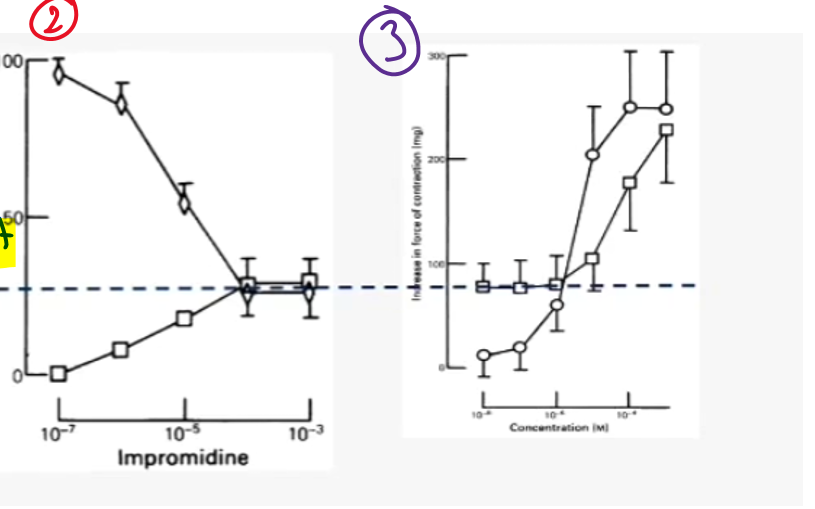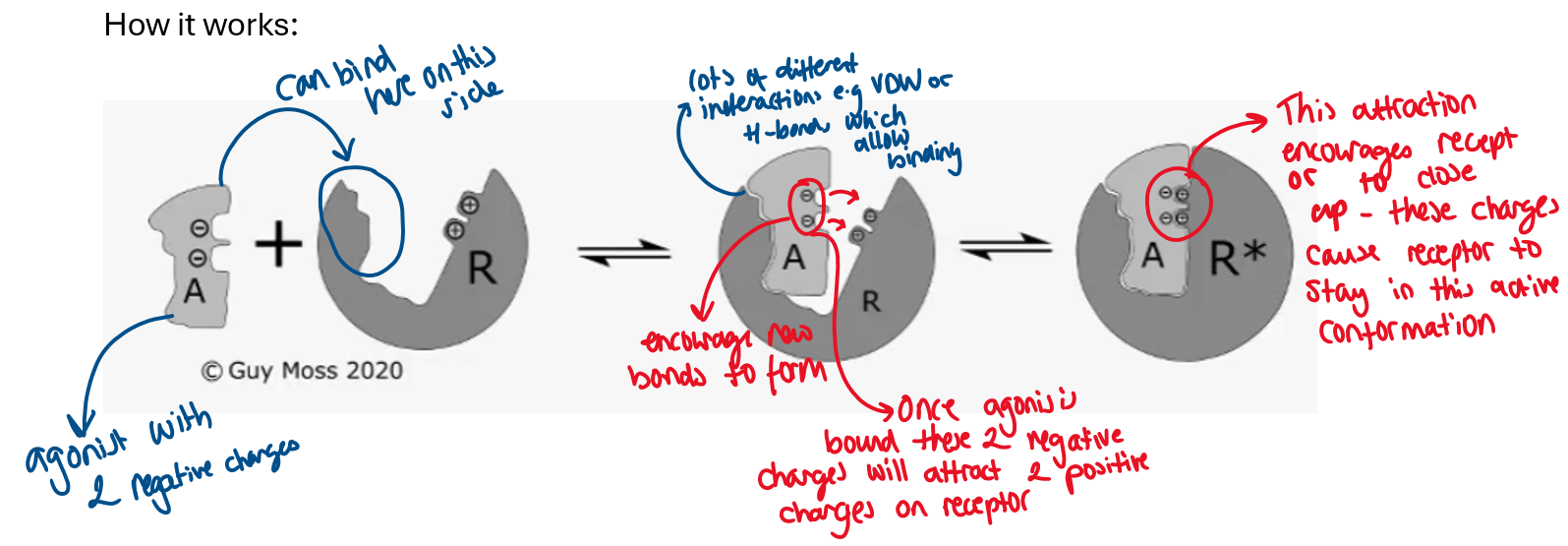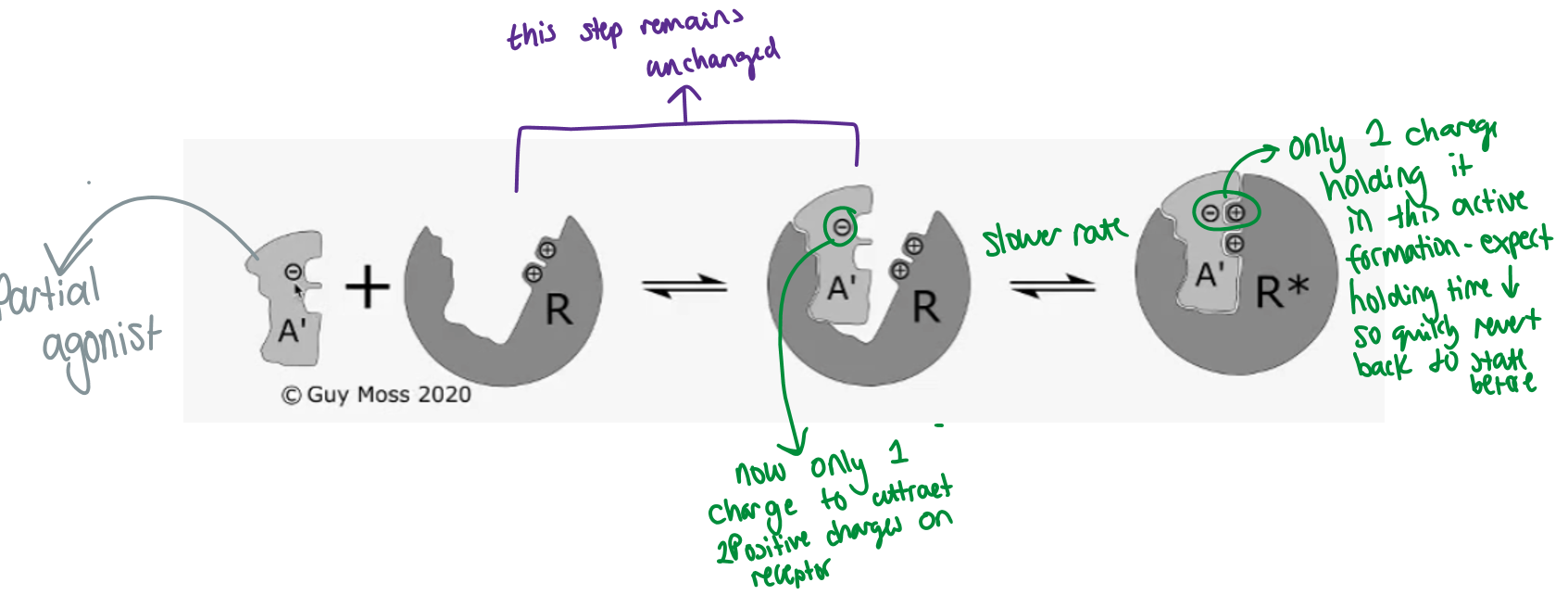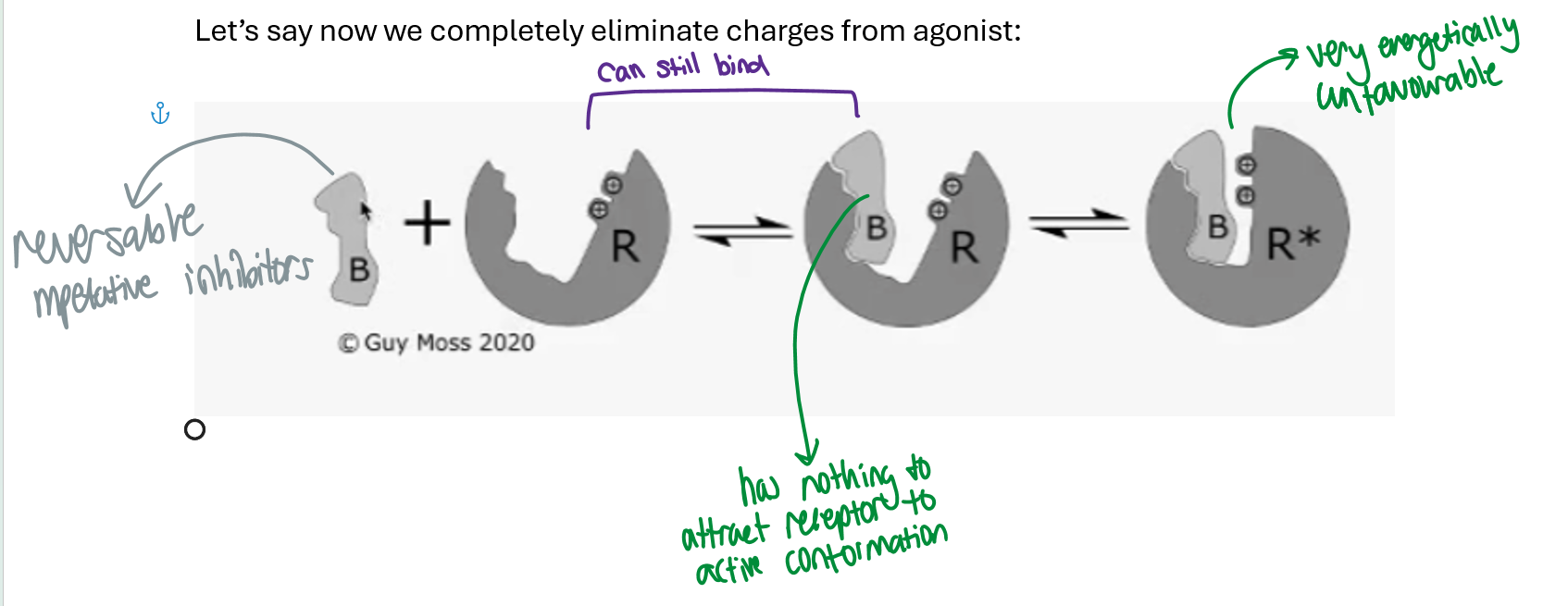Partial Agonist & Inverse Agonist - L6
1/12
Earn XP
Description and Tags
Name | Mastery | Learn | Test | Matching | Spaced |
|---|
No study sessions yet.
13 Terms

what experiments were done
2) Started with high conc of agnosit 1 leading to max response, then added agonist 2 in increasing concentrations found that maximum tissue responce decraesed down to the max tissue reonce of A2
3) Started this experiment with A2 creating max response that it can, then added A1 in increasing concentations and found tissue response increased to maximum of A1
what is the The del Castillo-Katz Mechan

what is efficasy?
ability for agonist to encourage receptor to its active conformation
how does this work

what happens if we delete one of the charges on the receptor
type of partial agonist

lets say we eliminate all charegs on agonist what happens?

What type of agonsit is this when all charges are removed
this is a type of reversible competitive antagonist
this is because competes with agonist for binding with receptor, but when binds does nothing
what happens if we add a positive charge
this is called inverse agonist, this stops receptor form forming active conformation
it inhibits receptor
it makes it energetically unfavorable to form active conformation

partial agonist …
activate receptors to active form but only partially
reversible competitive inhibitors..
block activation of receptors but do not change its activity
Inverse agonist
bind and cause a change in receptor activity but inhibiting it
how do we know that ideas on agonists are correct
through ligand gates ion channel recordings (recordings of current)
Constitutively active receptors…
these are receptors that remain in active conformation even when no agonist bound
can help this by giving them an inverse agonist ( a drug) so do not assume a active conformation